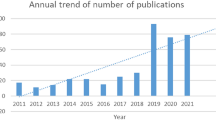Abstract
The demand for high-performance solutions for anomaly detection and forecasting fault events is increasing in the industrial area. The detection and forecasting faults from time-series data are one critical mission in the Internet of Things (IoT) data mining. The classical fault detection approaches based on physical modelling are limited to some measurable output variables. Accurate physical modelling of vehicle dynamics requires substantial prior information about the system. On the other hand, data-driven modelling techniques accurately represent the system’s dynamic from data collection. Experimental results on large-scale data sets from Metro do Porto subsystems verify that our method performs high-quality fault detection and forecasting solutions. Also, health indicator obtained from the principal component analysis of the forecasting solution is applied to predict the remaining useful life.
Access this chapter
Tax calculation will be finalised at checkout
Purchases are for personal use only
Similar content being viewed by others
References
Basseville, M., Abdelghani, M., Benveniste, A.: Subspace-based fault detection algorithms for vibration monitoring. Automatica 36(1), 101–109 (2000)
Ding, S.X., Zhang, P., Naik, A., Ding, E.L., Huang, B.: Subspace method aided data-driven design of fault detection and isolation systems. J. Process Control 19(9), 1496–1510 (2009)
Keyvaani, H., Mohammadi, A., Pariz, N.: Identification of modal series model of nonlinear systems based on subspace algorithms. J. Appl. Sci. 10(11), 909–914 (2010)
Ljung, L.: System identification. In: Rayner, P.W.J., Kingsbury, N.G. (eds) Signal Analysis and Prediction. Applied and Numerical Harmonic Analysis, pp. 163–173. Springer, Boston (1998). https://doi.org/10.1007/978-1-4612-1768-8_11
Ljung, L., Andersson, C., Tiels, K., Schön, T.B.: Deep learning and system identification. IFAC-PapersOnLine 53(2), 1175–1181 (2020)
Vicente, B.A.H., James, S.S., Anderson, S.R.: Linear system identification versus physical modeling of lateral-longitudinal vehicle dynamics. IEEE Trans. Control Syst. Technol. 29(3), 1380–1387 (2020)
Wei, X., Verhaegen, M., van Engelen, T.: Sensor fault detection and isolation for wind turbines based on subspace identification and kalman filter techniques. Int. J. Adapt. Control Signal Process. 24(8), 687–707 (2010)
Yang, X., Gao, J., Huang, B.: Data-driven design of fault detection and isolation method for distributed homogeneous systems. J. Franklin Inst. 358(9), 4929–4949 (2021)
Acknowledgements
This work was supported by the CHIST-ERA grant CHIST-ERA-19-XAI-012, and project CHIST-ERA/0004/2019 funded by FCT.
Author information
Authors and Affiliations
Corresponding author
Editor information
Editors and Affiliations
Rights and permissions
Copyright information
© 2023 The Author(s), under exclusive license to Springer Nature Switzerland AG
About this paper
Cite this paper
Davari, N., Veloso, B., Ribeiro, R.P., Gama, J. (2023). Fault Forecasting Using Data-Driven Modeling: A Case Study for Metro do Porto Data Set. In: Koprinska, I., et al. Machine Learning and Principles and Practice of Knowledge Discovery in Databases. ECML PKDD 2022. Communications in Computer and Information Science, vol 1753. Springer, Cham. https://doi.org/10.1007/978-3-031-23633-4_26
Download citation
DOI: https://doi.org/10.1007/978-3-031-23633-4_26
Published:
Publisher Name: Springer, Cham
Print ISBN: 978-3-031-23632-7
Online ISBN: 978-3-031-23633-4
eBook Packages: Computer ScienceComputer Science (R0)




